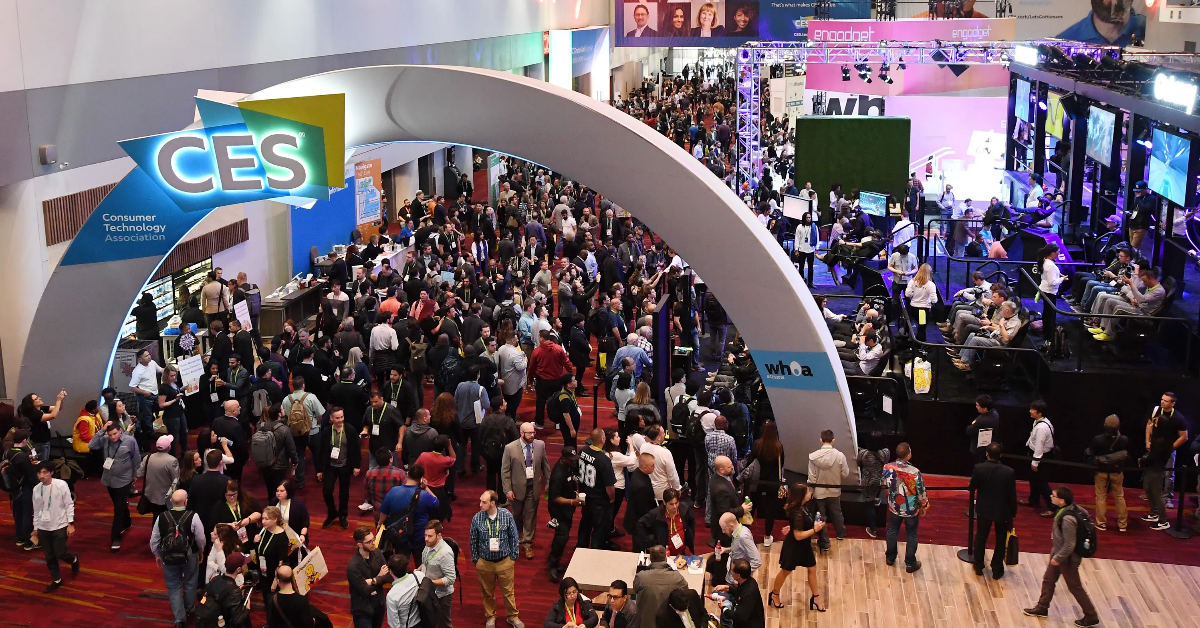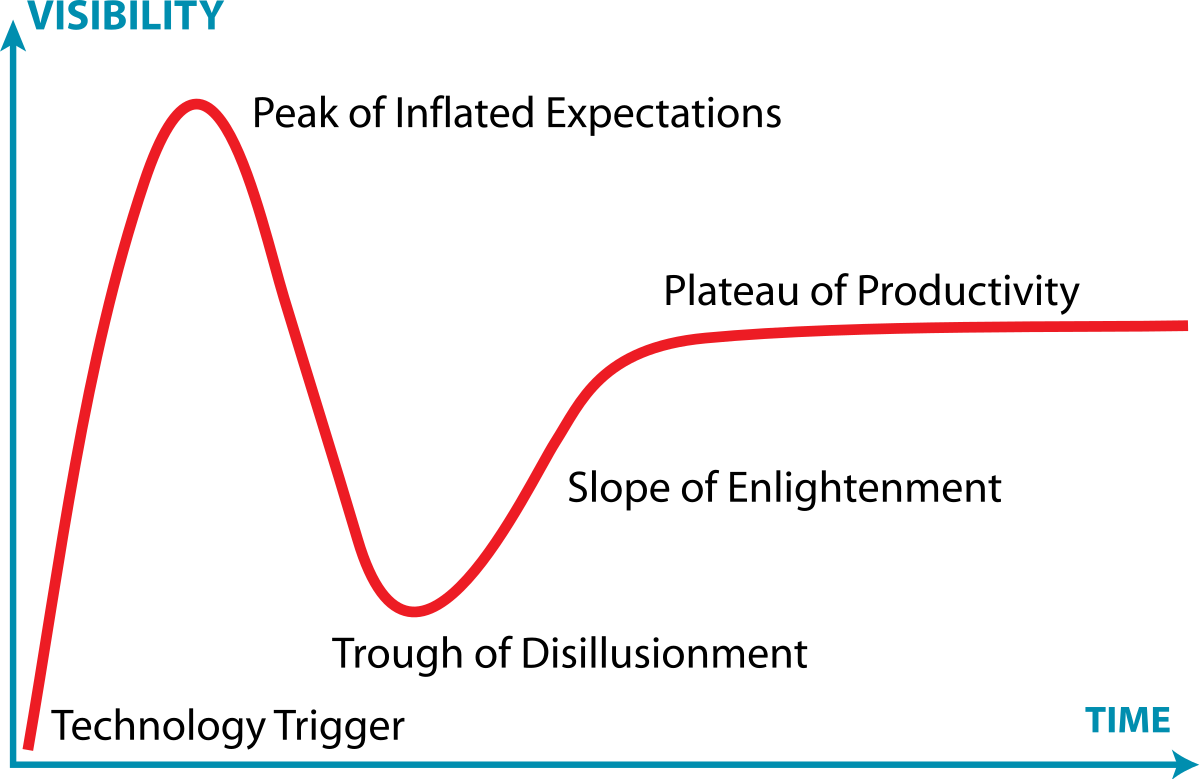Who Cares? Beyond the Hypes of Fast Technology

Crowd of visitors at CES. Source: Imagist3ds
Every year in January, Las Vegas becomes the epicentre for tech enthusiasts, innovators, and industry leaders who gather to witness the spectacle of the Consumer Electronics Show (CES). Advertised as ‘the most powerful tech event in the world’ by its organizers, CES stands as a platform for unveiling the latest advancements in consumer electronics. Is between the myriad of products and technologies showcased there that tech giants like Google, Microsoft and Netflix built their bones back in their early days.
The significance of CES goes beyond flashy presentations and product unveilings. It serves as a compass for forthcoming trends and innovations in the consumer electronics industry. The prototypes and concepts showcased at CES often foreshadow the direction of technological development in the coming year. However, amidst the excitement and anticipation, lies the inevitable phenomenon of hype cycles.

The Gartner ‘hype’ cycle, introduced by the IT firm Gartner. Source: Wikipedia.
A hype cycle reflects the evolution of specific technologies over time, encompassing their maturity, adoption rates, and societal impacts. It begins with an initial surge of excitement and inflated expectations, fuelled by media coverage and investor interest. However, this euphoria is often followed by a period of disillusionment and scepticism as the technology fails to meet exaggerated expectations. Over time, as the technology matures and its real-world applications become clearer, a more balanced perspective emerges.
A notable recent example of a hype cycle is the fervour surrounding the metaverse. Presented as the next evolution of the internet, the metaverse captured the imagination of industry leaders and the public alike. However, just a year after its grand unveiling by Mark Zuckerberg, the metaverse faced scrutiny and scepticism. Reality Labs, the division responsible for metaverse-related initiatives, reported an operating loss of $13.7bn last year (1.6 million every hour!) [1], highlighting the challenges of translating hype into tangible market traction. Mark Zuckerberg itself went from “metaverse-first, not Facebook-first” in 2021 [2] to saying that the metaverse is “not the majority of what we’re doing” in 2022 [3].

Meta Platforms CEO Mark Zuckerberg’s avatar speaks during a virtual reality event. Source: Bloomberg.
But the metaverse and its promised marvels are only the most recent hype cycle. Prior to the metaverse, blockchain technology – to name one example – experienced a similar trajectory of hype and disillusionment.
Unsurprisingly, this year at CES was all about artificial intelligence, which has sucked all the air out of the room. The technology you heard about everywhere was AI [4]. Investors are surfing the wave and floods of money are being thrown at AI start-ups [5]. Time will tell us whether AI can deliver on its promises and overcome the challenges that lie ahead.
Hype cycles, while often viewed negatively, are an inherent part of technological progress. They reflect the tumultuous journey from concepts to reality, where expectations collide with the complexities of implementation and adoption. These waves of ‘next big things’ can be bewildering, confusing and erode confidence towards technology. It is true in fact that many of the technology are just “flashes in the pan” and die before reaching any kind of matureness [6].

Introduced by Samsung during the last CES, ‘Ballie: your perfect home AI companion’ (at least for your pet). Source: Samsung electronics.
Amidst the buzz of tech shows and the frenzy of media coverage, it’s essential to adopt a discerning perspective. Rather than succumbing to the appeal of hype, it’s crucial to focus on the core features and affordances of what is presented to us as ‘the next big thing’. Core features represent the essential capabilities that define a technology’s identity [7], while affordances denote the possibilities of action that it offers to users [8]. By evaluating technologies through this lens, we can better discern their true value and potential impact.
For instance, at CES last January Samsung presented an AI (of course) home assistant that follows you in your daily tasks. Is it just an Alexa on wheels or something more? A start-up called Rabbit presented a handheld device capable of control your music, order you a car, buy your groceries, send your messages, and more, all through a single interface. Have they just reinvented the smartphone?

Rabbit R1 from the AI startup Rabbit. It promises to be a universal controller for apps and services without any login. One device to rule them all. Source: The Decorder.
In the vast sea of gadgets and innovations at CES, the question “who cares?” takes on new significance. By interrogating the core features and affordances of emerging technologies, we can identify the tools, services, and devices that truly offer value to users.
What are the core features of the device? What those functionalities afford me to do? Given such functionalities and affordances, should I buy it? Which other tools are available out there with the same features or affordances? This critical perspective enables us to navigate hype cycles with clarity and discernment, separating ephemeral trends from transformative innovations.
As we await the next wave of gadgets from Vegas, let’s embrace a (positively) critical mindset. By focusing on the substance behind the hype, we can uncover the technologies that will shape our digital future in meaningful ways. In a landscape dominated by novelty and excitement, it’s the thoughtful consideration of core features and affordances that ultimately guides us towards genuine progress.
[1] https://www.cnbc.com/2023/02/01/meta-lost-13point7-billion-on-reality-labs-in-2022-after-metaverse-pivot.html [2] https://about.fb.com/news/2021/10/founders-letter/ [3] https://www.businessinsider.com/mark-zuckerberg-metaverse-not-majority-were-doing-facebook-meta-focus-2022-11?r=US&IR=T [4] https://www.theverge.com/2024/1/13/24035152/ces-generative-ai-hype-robots [5] https://www.ft.com/content/9c5f7154-5222-4be3-a6a9-f23879fd0d6a [6] https://www.linkedin.com/pulse/8-lessons-from-20-years-hype-cycles-michael-mullany/ [7] DeSanctis, G. and Poole, M.S. (1994), “Capturing the complexity in advanced technology use: Adaptive structuration theory”, Organization Science, INFORMS, Vol. 5 No. 2, pp. 121–147. [8] Markus, M.L. and Silver, M.S. (2008), “A foundation for the study of IT effects: A new look at DeSanctis and Poole’s concepts of structural features and spirit”, Journal of the Association for Information Systems, Vol. 9 No. 10, p. 5.


Add a Comment